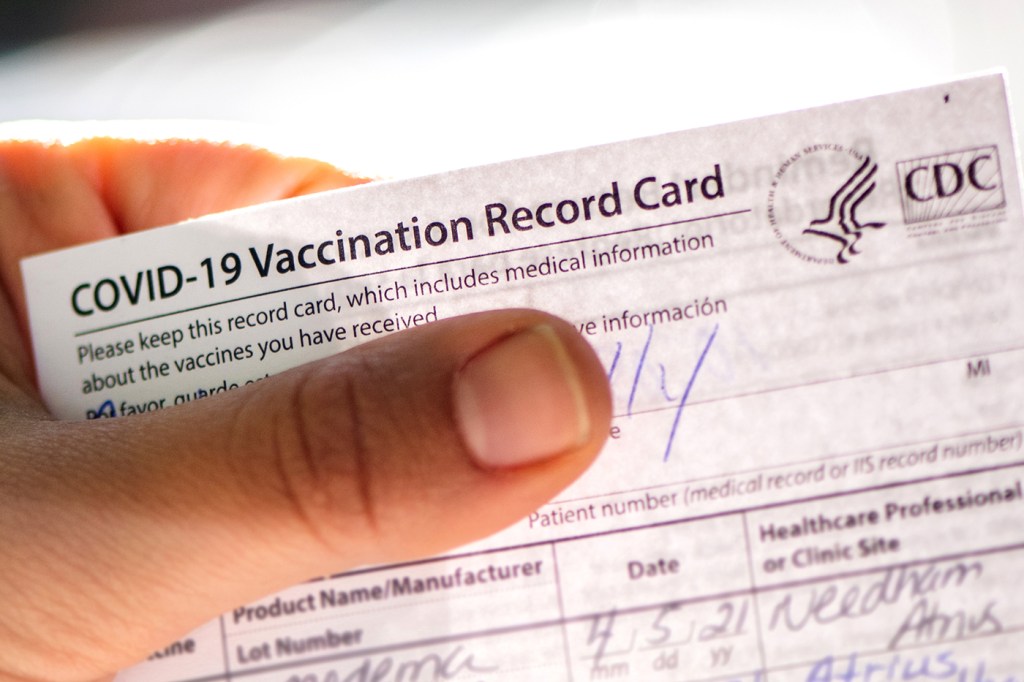CDC overestimating number of vaccinated Americans, Northeastern professor and the COVID States Project say

A Northeastern professor says the Centers for Disease Control has significantly overestimated the number of people who have received at least one COVID shot, leading the federal agency to paint a rosier picture of vaccine compliance than actually exists.
One of the authors of the COVID States Project’s recent report on nationwide vaccination rates, David Lazer, says his report shows 75% of adults in the United States received at least one vaccination against the coronavirus, compared to the 92.1% reported by the CDC.
“That’s a very, very big difference,” says Lazer, a Northeastern distinguished professor of political science and computer sciences.
The CDC is “saying 8% of the population has gotten no vaccine, and we’re saying 25%,” he says. “So we’re saying three times as many people have gotten zero vaccines.”
“The reason for that is pretty simple,” Lazer says.
The CDC is relying on information reported by states, which in some cases counts individuals going for booster shots as separate individuals getting the first shots in the series, especially in cases when people forget to bring their vaccination cards for the boosters.
“It’s not like they’re collecting Social Security numbers” to verify the data, Lazer says.
“We’re basically saying the population is significantly less protected than what the CDC is saying,” he says.

The COVID States Project’s report—its 100th since launching in May of 2020—also shows that vaccination rates have plateaued in the last year and a half.
“It’s barely budged. It’s not like we’re converting all these vaccine resistant people from October 2021. If you weren’t vaccinated in October or November of 2021, you’re not vaccinated now,” Lazer says.
“The CDC data show this very steady increase in people who are getting their first shot. The data are very distorting because the message you get ‘we’re slowly winning the war on vaccine resistance’” and that is not the case, he says.
The report says the regions with the highest vaccination rates are the Northeast, West Coast and Hawaii. The regions with the lowest rates are in the South and in a block of contiguous Western and Midwestern states—North Dakota, South Dakota, Montana, Wyoming and Idaho.
The COVID States Project relied on a survey of 25,000 people for its latest report, which also showed that less than one-third of respondents got the bivalent booster.
The CDC’s reliance on state reporting means it underestimated the number of people getting booster shots, Lazer says.
In every state, older people were more likely to get vaccinated against COVID-19 than younger people. But the CDC says more 65-year-olds have gotten the shots than there are 65-year-olds in the U.S.
When it comes to reporting the percentage of people who completed the primary series of shots—either two shots of Pfizer or Moderna or one of Johnson & Johnson—the difference between CDC and COVID States Project percentages are less gaping.
The CDC says 79% of Americans completed the first series of shots while the COVID States Project estimates 73%.
Lazer says his survey is more accurate than the CDC’s reporting but adds it is not perfect.
“For example, we’re not getting a good sample of people in nursing homes,” he says. “If they have different rates of vaccination, we’re missing those people.”
The COVID State Project is a multi-university consortium of researchers initially funded by Northeastern University and the National Science Foundation.
As far as COVID-19 reporting is concerned, the project is ongoing but slowing down and may refocus its efforts on broader health policies, Lazer says.
“I don’t think we can say COVID is quite in the rearview mirror, because it’s still killing a lot of people every day, just much more quietly.”
Cynthia McCormick Hibbert is a Northeastern Global News reporter. Email her at c.hibbert@northeastern.edu or contact her on Twitter @HibbertCynthia
